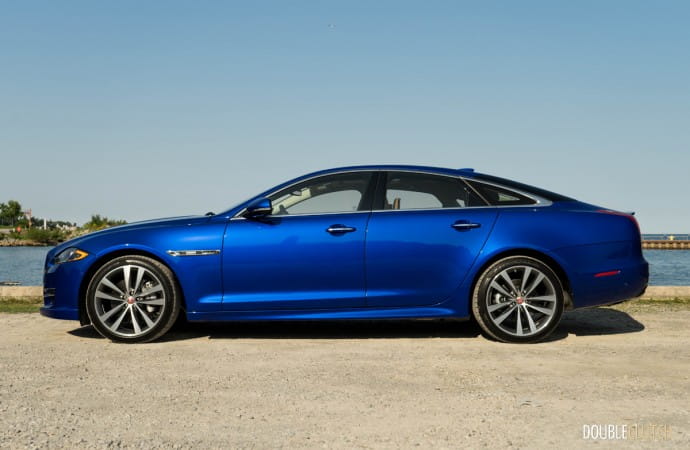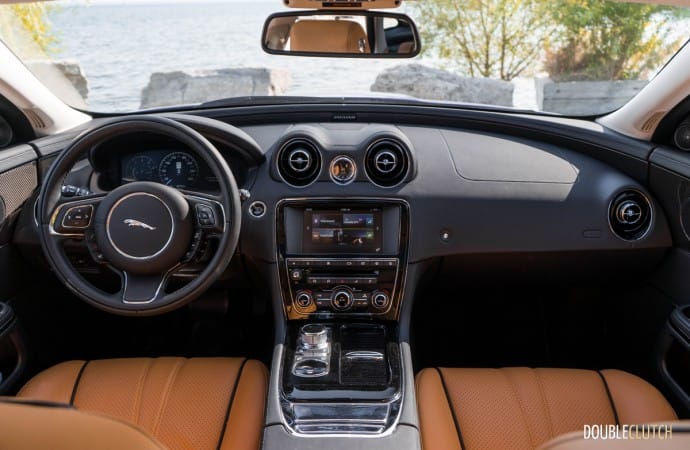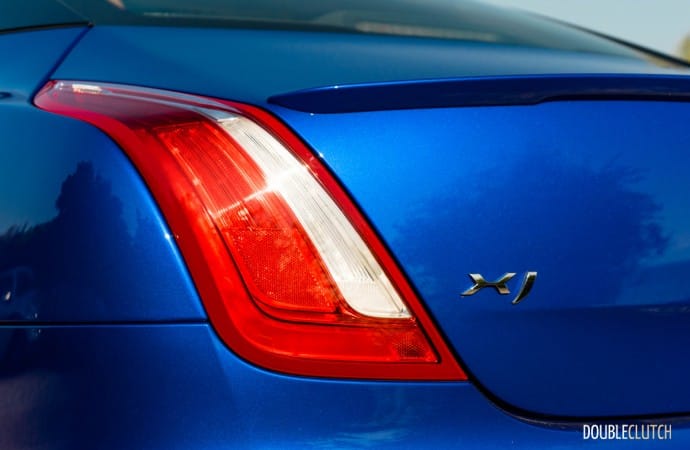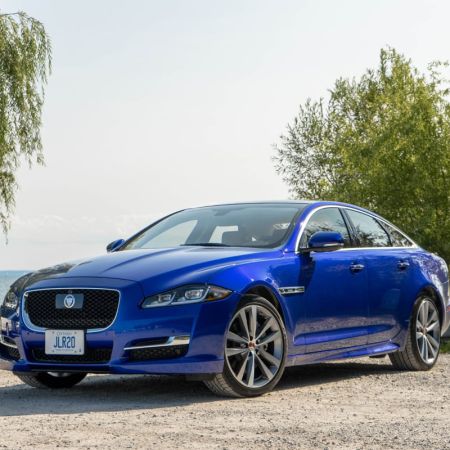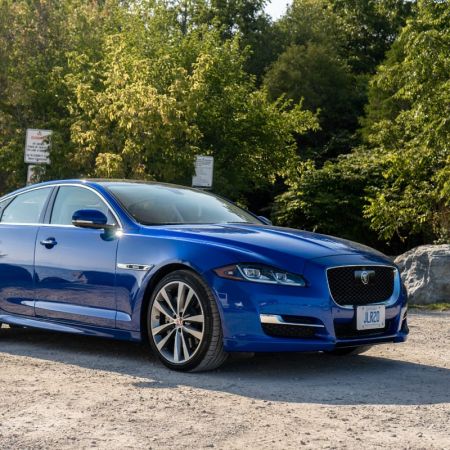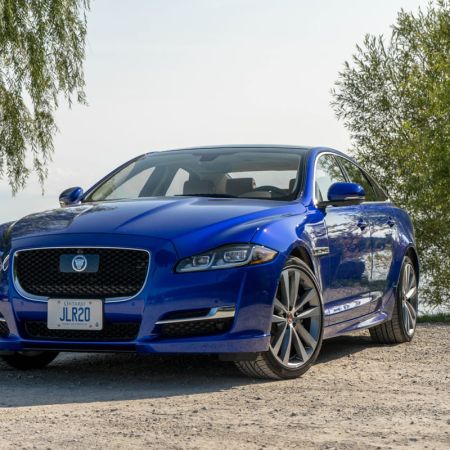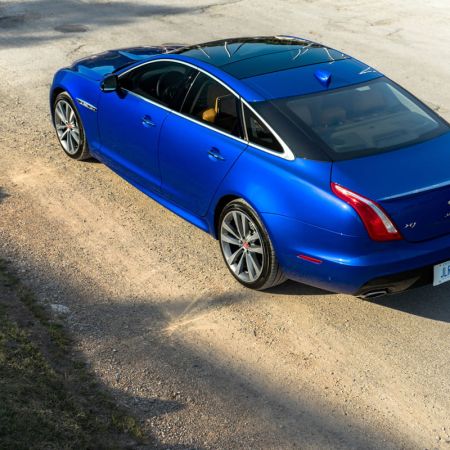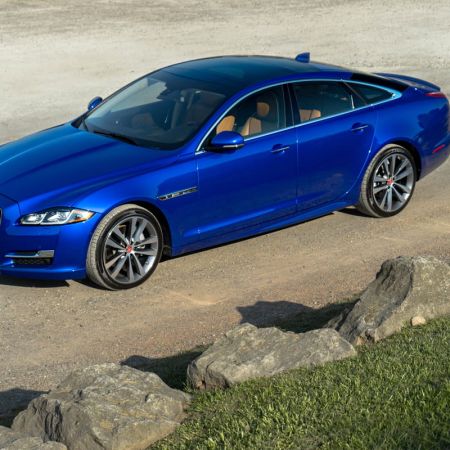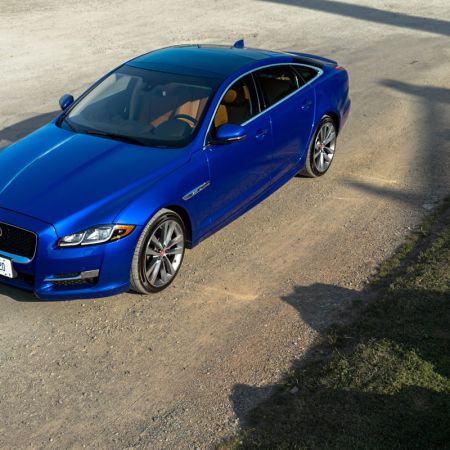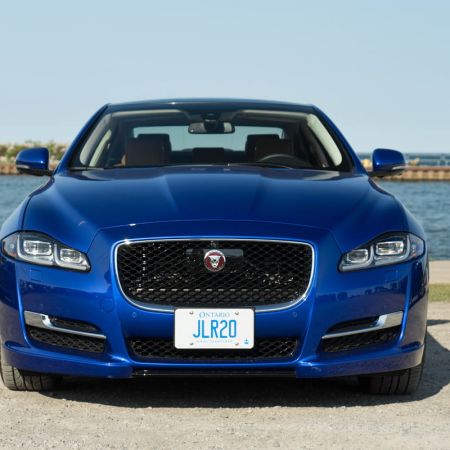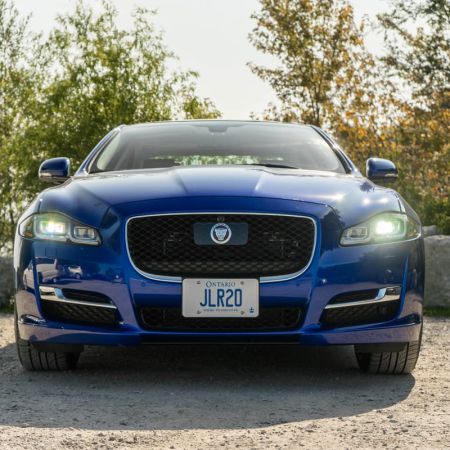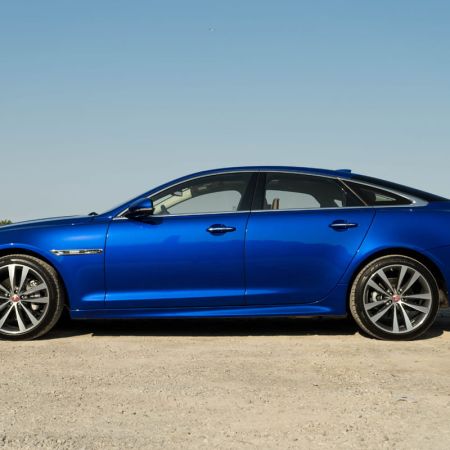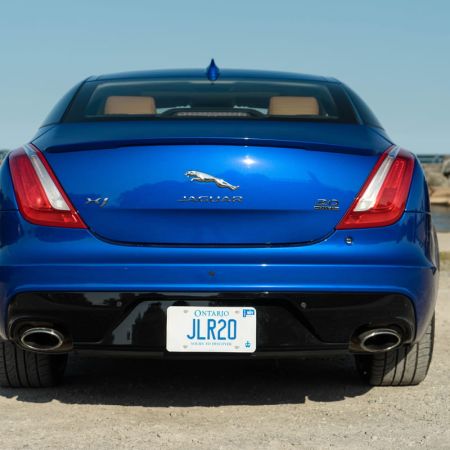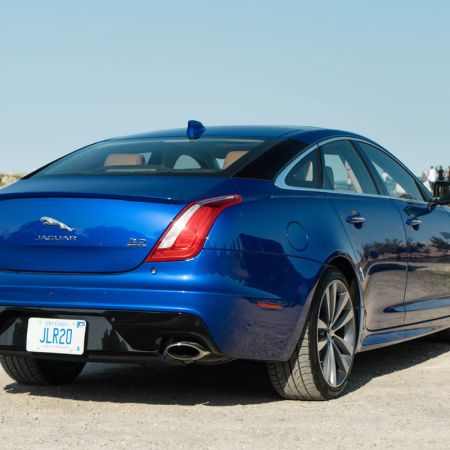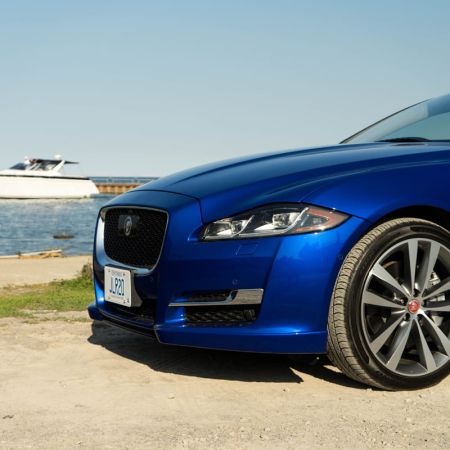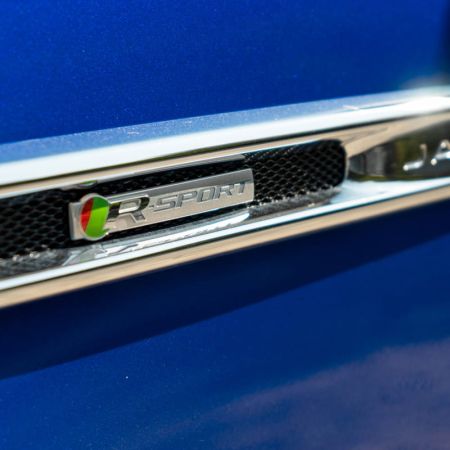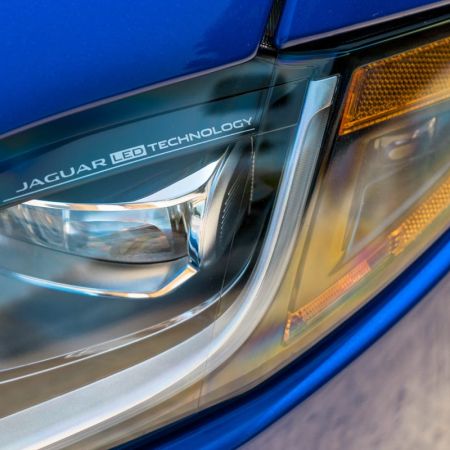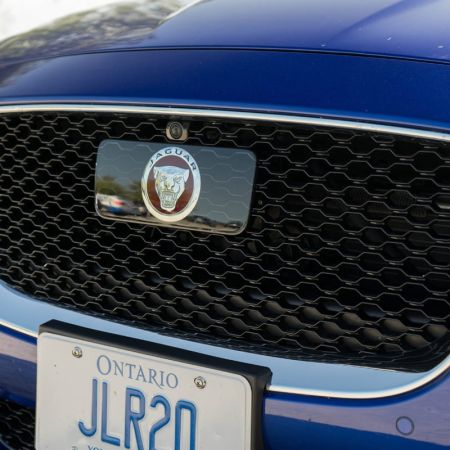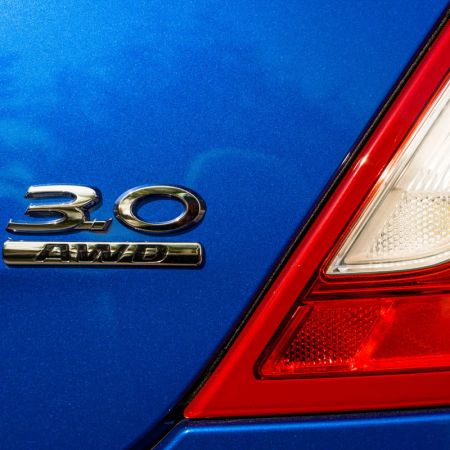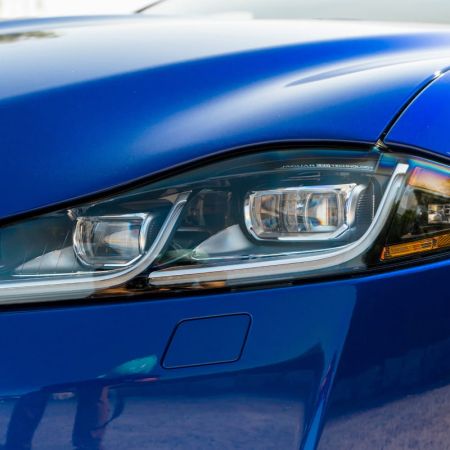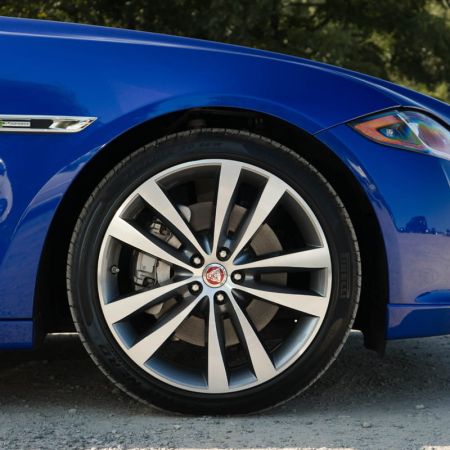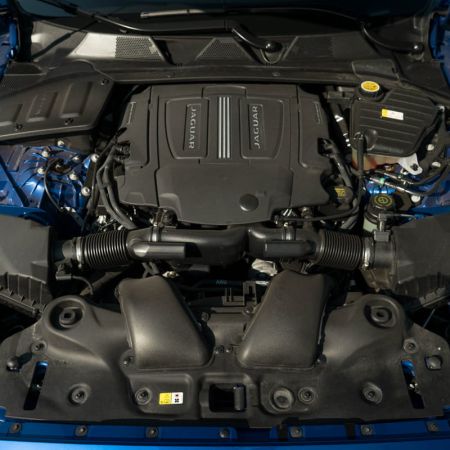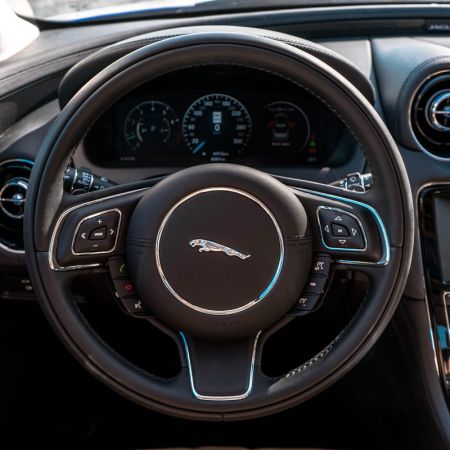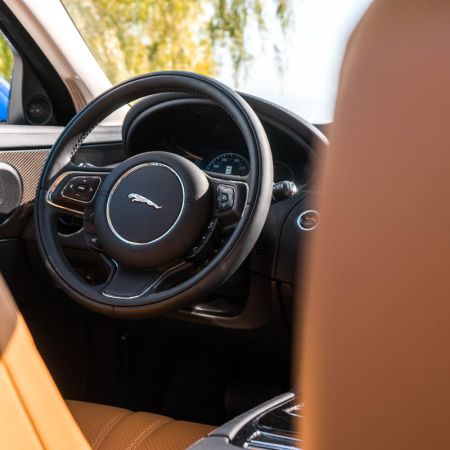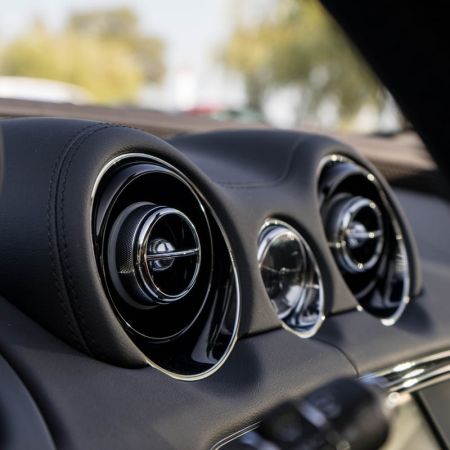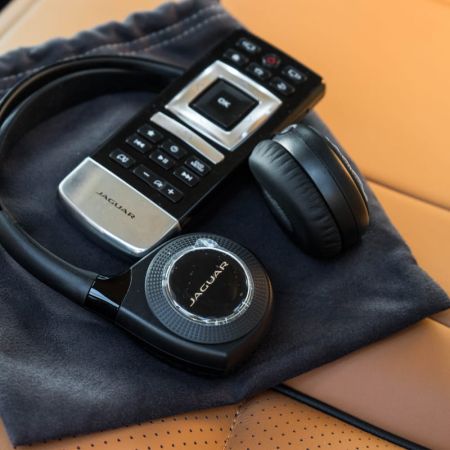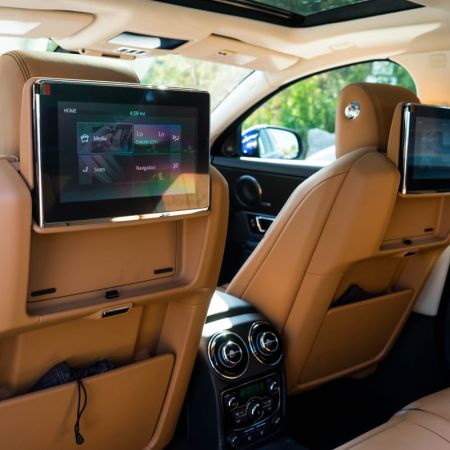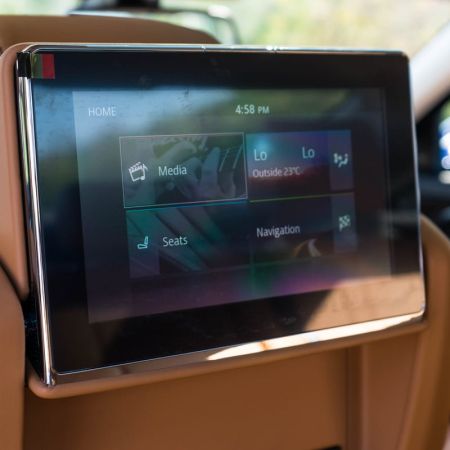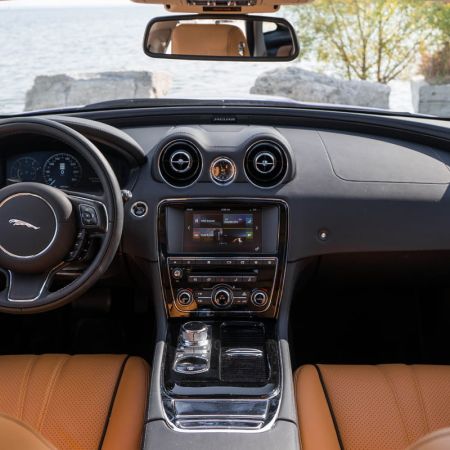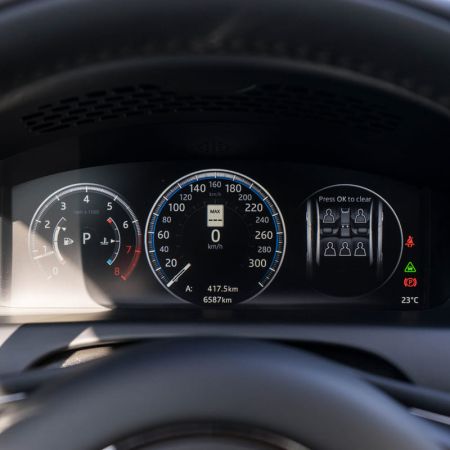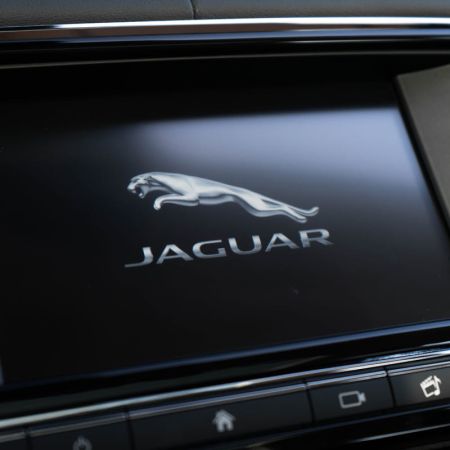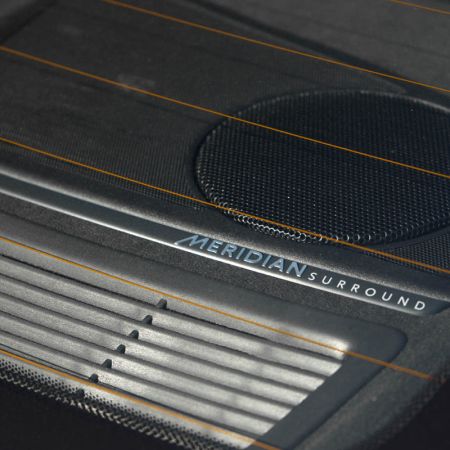In the world on big sedans, Mercedes-Benz and BMW pioneer with the S-Class and 7-Series (reviewed here) flagship sedans. While other competitors try their best to reach the same ranks, most will struggle to match their success. Jaguar takes its best shot with the XJ, with both regular and long wheelbase models. For this review, I spent a week with the 2017 Jaguar XJ R-Sport 3.0 AWD, loaded with goodies sure to entertain even the poshest individual. While the 2016 facelift keeps the XJ looking current, it continues with the same platform and design introduced back in 2009. Coming close to a nine-year lifespan, the age of the XJ platform is starting to show when compared to its updated competitors.
What makes this segment so costly to own, aside from luxury amenities, is space. Full-size luxury sedans meant to transport wealthy customers in a comfortable setting is the sole reason these cars exist, and without it, the car becomes obsolete. The XJ looks like a very long car that would seem to have plenty of space, however looks can be deceiving. The cabin of the XJ proves to be a tight squeeze for just about anyone expecting plenty of room. Rear passenger space is limited thanks to the tight configuration, and headroom is diminished thanks to a sloping roofline in favour of the stylish design. While the XJ looks sporty and agile on the outside, that look comes at the cost of comfort for anyone near or above six-feet tall in this short wheelbase model.
This tester has also been equipped with a rear-seat entertainment package consisting of two touch-screens that fold into the rears of the two front seats. The compartment in which these displays get tucked away adds extra width to the backs of the front seats, taking away even more potential leg room for passengers. While it’s nice that the screens can be hidden, a fixed device would eliminate the backpack latched onto the front seats. Aside from overall cabin space, or lack thereof, the selected materials are quite beautiful and nice to the touch. The London Tan seats with an Ebony Upper Fascia make for a premium environment, even more so when joined by carbon fibre trim ($1,640). Unfortunately, the ergonomics suffer yet again thanks to form over function. Due to the unnecessarily large trim panels on the doors, the door handles have been forced down into an unnatural position. The interior door handles themselves are tiny, so much so that I could just barely fit two fingers behind the latch.
Then there’s the infotainment system. While this model uses the latest iteration of Jaguar’s InControl Touch, the overall user friendliness is still lacking when compared to rivals like BMW. Simplicity is key when configuring these systems, and Jaguar seems to have missed the mark, though this version is vastly improved over its predecessor. While the age of the XJ is starting to show, it’s still a rather good looking machine. Jaguar’s aggressive body language gives the XJ a mean demeanor, reminding me of something the lead villain would be seen being chauffeured in. After all, I’ve heard it’s good to be bad. With an updated front and rear bumper, paired with a fresh set of LED headlights and taillights, the XJ keeps up with the rest of the Jaguar lineup, but still slips behind the competition.
When finished in the stunning Caesium Blue, the XJ shines bright with a youthful glow. The optional 20” 5 Split-Spoke ‘style 5045’ ($3,570) offer a sporty looks with an elegant finish. The R-Sport trim features black grill inserts, and R-Sport badging on the front fenders. The R-Sport also includes a trunk lid lip spoiler, for that added touch of aggression.
In terms of power, 340 horsepower at 6,500 RPM and 332 lb-ft. of torque from 3,500 to 5,000 RPM is produced from the supercharged 3.0L V6 motor. The eight-speed automatic transmission translates that power smoothly to all four wheels through the all-wheel-drive system. Power delivery is buttery smooth, and the supercharged nature of this engine adds that bit of smoothness without the lag associated with turbocharged competitors. The 3.0L model is also more efficient than the fire-breathing supercharged V8 on full-blown R models. Jaguar rates the 3.0L XJ at 14.0L/100km city and 9.0L/100 highway. My as tested combined average of 12.9L/100km, with most of my driving consisting of a city commute.
Driving this XJ feels very relaxed. Power is available when you need it, and the suspension does a good job at keeping you comfortable, while at the same time providing a sufficient amount of road feedback. Steering is well weighted and can be stiffened in sport mode. The car finds itself somewhere between an S-Class and an E-Class (reviewed here). It’s not quite at the level of the S, though it is a step above the E. A suitable middle ground for someone looking for a large car, with the nible abilities of something smaller.
The base price of a 2017 Jaguar XJ R-Sport 3.0 AWD comes in at $93,500. Upon adding a few additional options like the fantastic Meridian Reference Audio System, a whopping $4,290 checkmark, the price gets boosted to a lovely $111,252. The cons of this car mostly lie within the cabin, with overall space being a major concern, and an infotainment system that needs some simplifying. It looks great and it drives just as well. This generation of XJ is on its final leg, and there’s no doubt the next iteration will be something truly revolutionary..
See Also:
2017 Mercedes-Benz E 300 4MATIC


